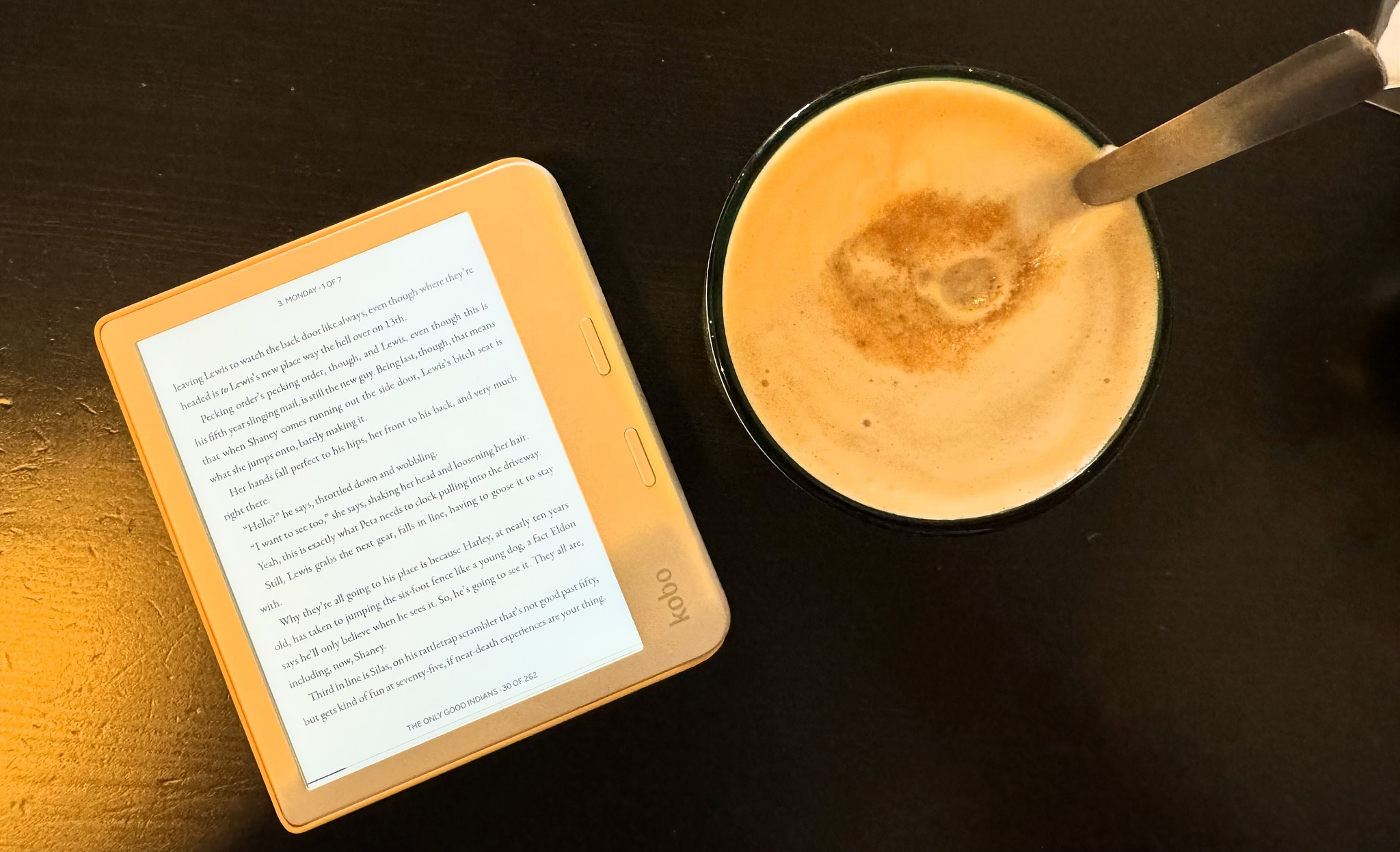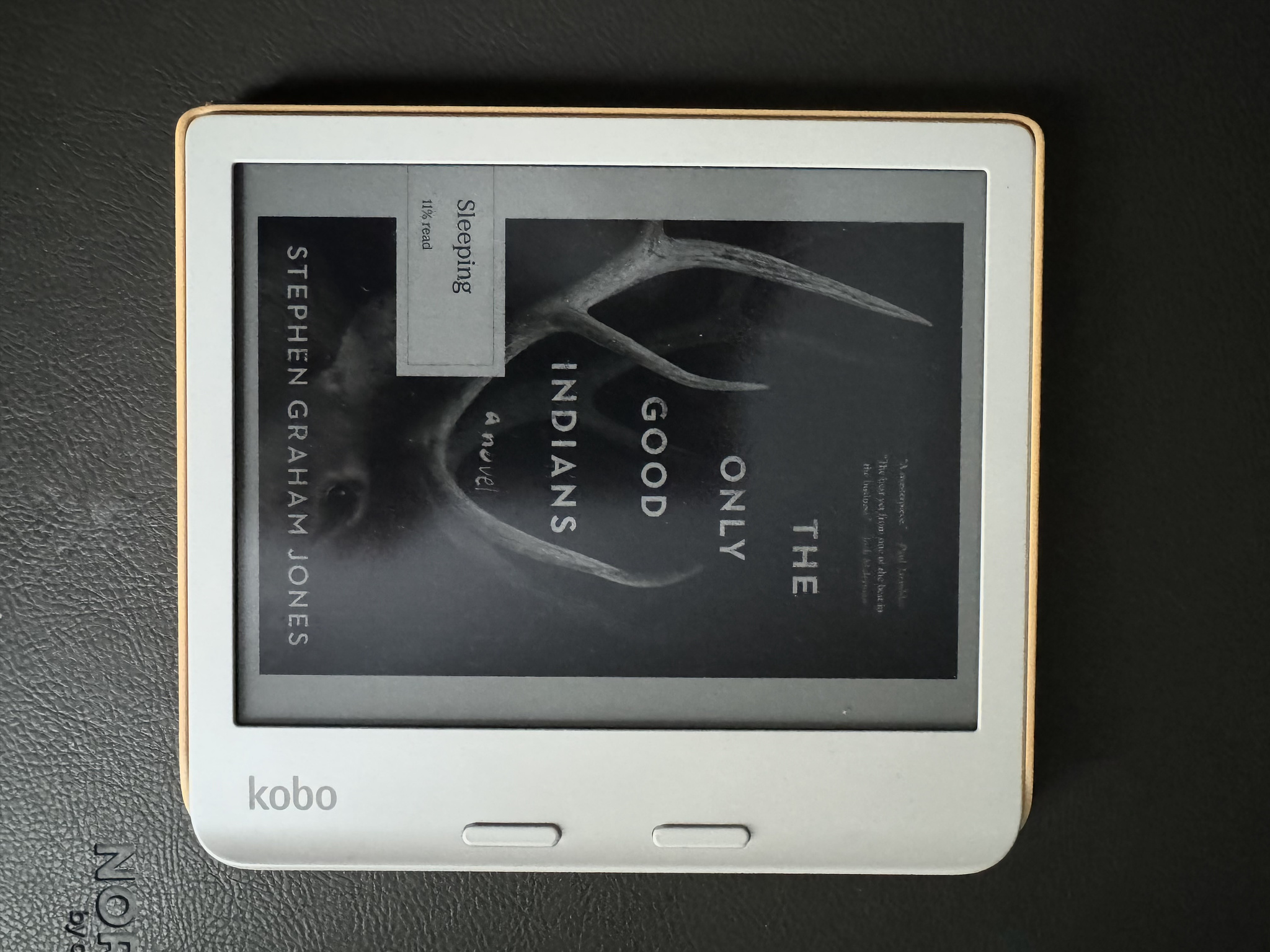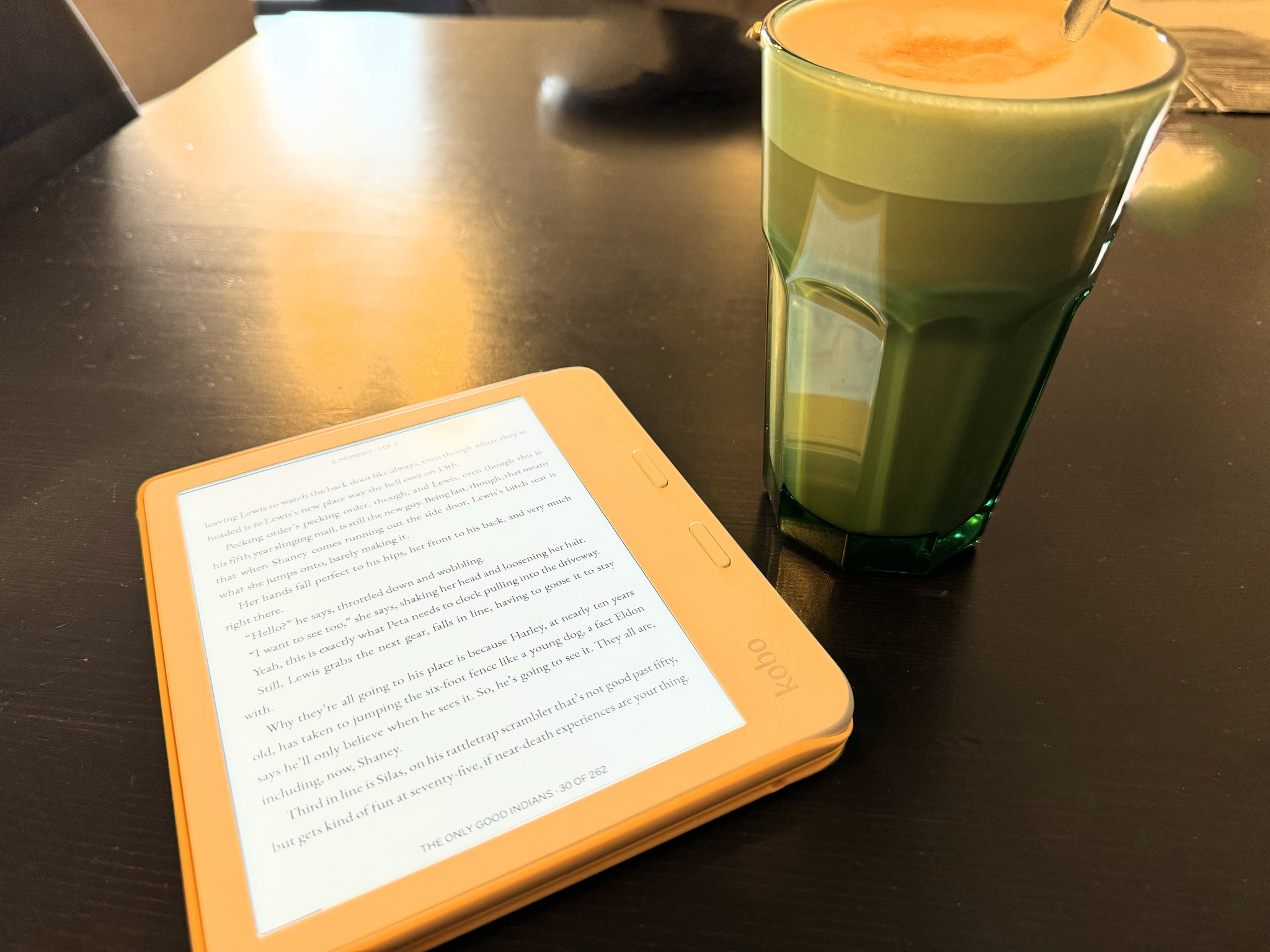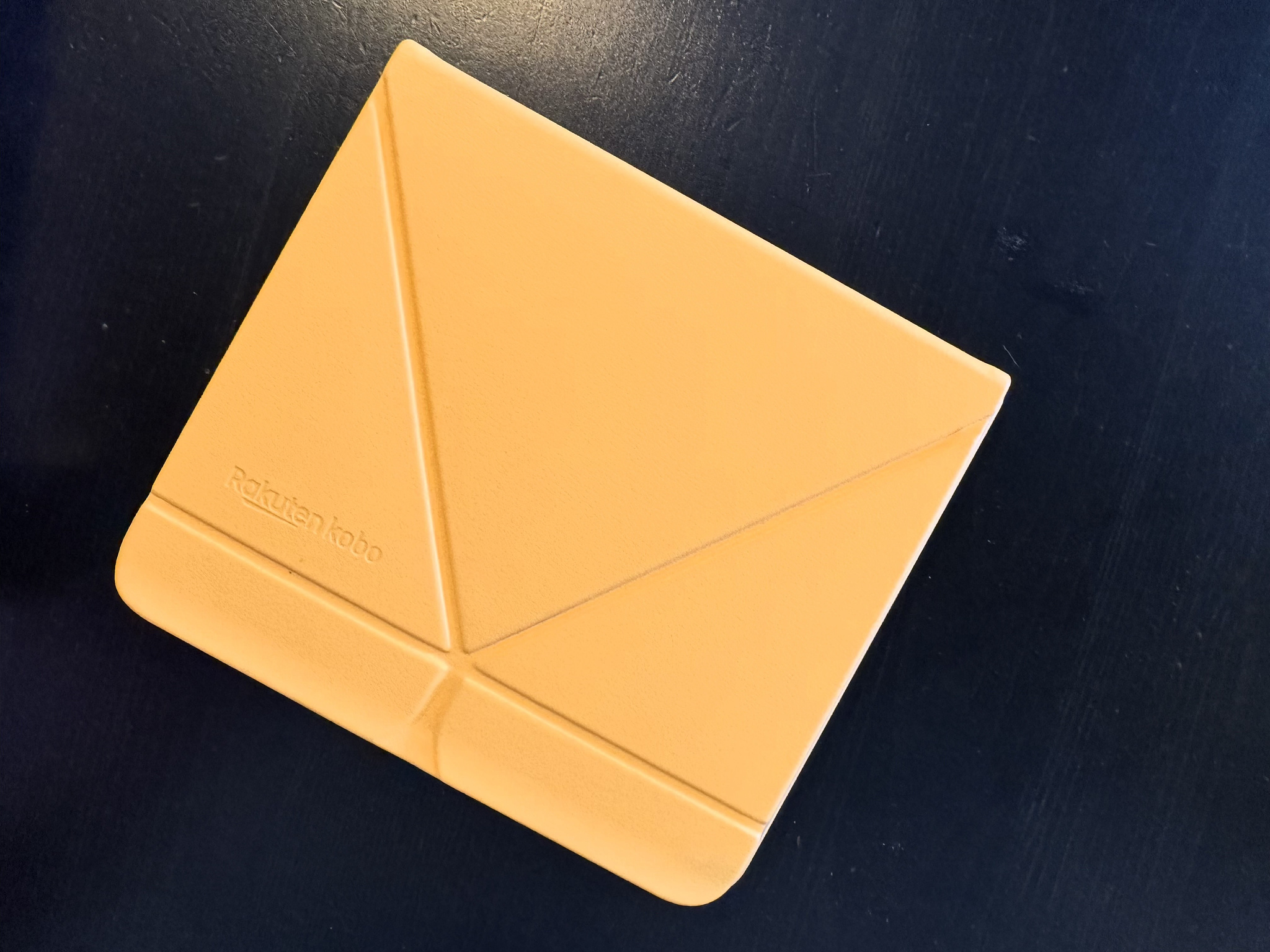The Kobo Libra Colour
Review
If there’s one thing that’ll take me out of my slump of not posting, it’s a fun new gadget and the Kobo Libra Colour certainly fits the bill there. If you’re after a TL;DR for this post, here it is: I love this device. If that’s a little too succinct for you, please read on dear reader.
Hardware
I won’t go into depth here on the actual specs, there are far better places out there to read about that sort of thing, but from a user perspective I was, and am, really intrigued by this form factor. Whilst I’ve had a few e-readers in the past, they’ve only been various iterations of the base Kindle. To be frank, I’d never even considered a Kobo, or the brand in general. It wasn’t until I spotted Maique talking about it that I looked into it and was instantly drawn to the device.
Design wise, it’s very similar to the Kindle Scribe but that device weighs in at almost £400. The Kobo, on the other hand, is half that, at £199.
The Kobo features a (colour) touchscreen but also some nice hardware buttons on the little protruding ‘lip’. This lip is curved slightly which, whilst a little odd looking, really helps you hold and use the device. They are a really nice touch and feel nice and tactile.

The screen looks great to me, but I don’t know how it compares to the more expensive Kobo devices. I suppose that isn’t really relevant, however, if this screen looks good to you. I don’t read any comics or anything these days, so the colour screen is of limited use to me personally but it will come in handy for note taking, which I’ll get to more a little later. As you would expect, from an e-ink screen, the colours are no way near that which you’ll see on something like an iPad, but the slightly washed out / water colour feel to them really works with the type of device and use cases this supports.
Something I noticed in jumping to a newer, and presumably more powerful device than my old Kindle is just how snappy this is. Again, you can’t compare this to a tablet, but in terms of e-ink screens, the refresh and loading times are just fantastic. It whips around like nobodies business.
One casualty, however, of both the colour and the quicker refreshes (along with the pretty bright backlight) is the battery. A normal Kindle can last weeks, months maybe, but after just a few days, this doesn’t appear it’ll be the case with the Kobo. It’s by no means terrible, but just be aware you may need to charge a little more frequently than you’d generally expect from an e-ink device. This will, of course, vary massively based on your own use.
The Kobo is made of plastic, with a nice textured back. The benefit of this material is the inherent lightness of it and the comfort to hold and use. The toss off, for some, is that it may feel a bit cheap. Despite the fact this is a relatively cheap device I don’t actually find it feels it personally. I would much rather a light device than something that has unnecessary bulk just to add the feeling it’s more premium. I’m looking at you Apple Vision Pro …

All in all, from a hardware perspective, I think this device is just fantastic. It feels good, it’s quick, and it’s fun!
Software
I’ve already touched on some of the software elements for the Kobo above, in that the overall device is fast and snappy, which is due in part to both hardware and, of course, the software. The OS itself, and general UX, I also enjoy a lot. Judging this again an old Kindle may well be unfair, but I found navigating around that device extremely clunky. Even getting back to the library view on my Kindle was a lesson in frustration. The Kobo, on the other hand, just feels more logical. There is far less reliance on remembering (or discovering) magic swipes and tender strokes on the screen, and more focus on actually clear touch targets in the UI itself. It feels like key controls like returning to your library, checking battery levels, and changing brightness and fonts, are right at hand at all times.
The main homepage lets you quickly navigate between Home, My Books, My Notebooks, Discover and a More menu that enables various integrations such as Google / Dropbox access, articles from Pocket and more. I noticed there is also a beta option in there to allow for a basic web browser experience. I’m going to pretend I didn’t see that, because I cannot be trusted to introduce excuses to let my mind wander when I’m trying to focus on reading. Be warned fellow procrastinators!
Whilst I’ve not explored this a great deal, and I can’t see myself using it all that much, but it’s worth mentioning a little more about the Notebook section, which seems quite cool. If you also purchase the optional Kobo Stylus 2, you can create and use multiple notebooks. You can, obviously, hand write notes but also, thanks to the colour display, highlight and draw onto your notes. As I say, it’s not massive for me, but I can see some people finding this very valuable. It’s extremely responsive, as well, considering the type of screen the Kobo has. I assume it ups the refresh rate considerably when it detects the stylus pressure, so again bear in mind the likely battery impacts this would have.
Getting books onto the device really couldn’t be easier. You can, of course, download your Kobo library directly from the main interface. If you have external books, however, these are also a breeze to get on there. If you connect your Dropbox or Google Drive account it will automatically create a new folder for you to drop your books into and they are available almost instantly. You can also upload books from Calibre, on a PC or Mac, equally as quickly.
Accessories
There are, at the time of writing, two main accessories available for the device. The aforementioned, and imaginably named, Kobo Stylus 2 and also a case called the SleepCover. Whilst I did buy both of these, I’m not massively impressed with either.
Let’s start with the Stylus. This is a £70 Apple Pencil type device. This really is a ‘does what it says on the tin’ type of accessory. If you want to write notes or highlight text in your books it’s a necessity, but there isn’t really all that much about it that makes it exciting. One thing I do like, however, that I cannot believe the Apple Pencil doesn’t have, is the rubber (or eraser for my American readers, don’t get excited) on the end. You can turn the stylus around and tap the flat end of the device on the screen to erase any content you’ve added. It even looks like a rubber which I thought was a nice touch. It also has a small button down by the nib which you can hold to toggle on highlighting.
The stylus is magnetised, and can be attached to one side of the Kobo, but it feels like quite a weak magnet so I wouldn’t trust it out and about.

By far the least impressive part of the package is the SleepCover. This was a crazy £35 clip on case for the device that covers the back and has a flap to fold over to protect the screen. The cover is fine, but for the price it feels incredibly cheap and flimsy. It has a bunch of flaps on the front cover which you can fold, in some way, to prop the device up. I don’t consider myself a genius, by any stretch, but I also feel I’m quite tech savvy, and I spent far too long trying to work out how you should fold this thing to make it work. I’ve no idea how often anyone would need to prop up a book in this way, so I gave up in the end. The indentations to allow for folding make the case feel even more flimsy as well. I can’t see it holding up for very long. I bought the white version of the Kobo, as a bit of a change from all the space greys in my life so thought I’d keep the theme going and get the ‘butter yellow’ case. They should have called this ‘left in the bottom of your bag for six months’ yellow instead. Yuck. Also, strangely, as far as I can see you cannot attach the stylus to the device whilst the case is on, which feels like a big oversight. It does stick to the front, on top of the cover, but just barely.
Summary
All in all, I am super impressed with this device. Obviously its use case is very specific, so it’s not pushing any crazy envelopes really, but for a £200 device I really can’t find any faults with it. It’s a joy to use and look at, getting your books on there is a breeze and the software and UI does not get in your way. When I was driving to work more often I used to consume a lot of audiobooks. Since working from home more regularly post-Covid I’ve missed absorbing some more engaging content. In just a few days the Kobo has made me fall in love with reading again and I’m really pushing myself to do it more when I have short time slots throughout the day. Whilst it still makes me fall asleep within seconds when I try to do it before bed, it’s still a very nice way to drift off.
If you’re into ebooks and have, like me, only ever been within the Kindle ecosystem, I would highly recommend giving Kobo, and this device specially, a try!
Happy reading everyone! 📚
